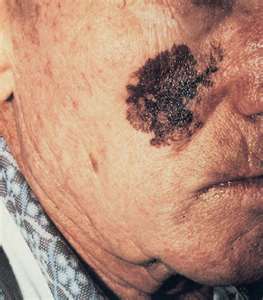Skin cancer is caused by too much exposure to ultra violet (UV) rays from the sun or sunbeds but the rates have been increasing over the years.
Although most cases are preventable, many cases also go unnoticed, because of delayed treatment and a poorer outlook of the disease.
People at greatest risk are those with fair complexion, freckled skin and lots of moles.
Signs to be aware of include changes to the size, shape or color of a mole; any other change to a mole or patch of skin; itching and bleeding or or a sore that hasn’t healed.
In women, skin cancers occur most commonly on the legs. For men, it is the back. But up to a fifth affect the skin of the head and neck.
Lesions on the scalp and the back of the neck can easily go unnoticed, and experts say hairdressers are the ideal people to spot these flaws.
Hairdressers would not be expected to make the diagnosis, but instead they can be tapped in the early detection of head & neck melanomas to their clients who can accordingly bring it to the attention of their own doctor.
According to American medical practitioners in the latest edition of the Journal of the American Academy of Dermatology, “We should not wait for our patients with skin cancer to come to us when it may be too late, but use research and outreach methods to improve early detection of head and neck melanomas by capitalizing on the role of hairdressers and their unique relationship with our potential clients.”
Hairdressers can and should be trained to check their clients for skin cancer, according to health experts.
Such training is achievable and of those hairdressers polled most were willing to help and keen to take on the extra responsibility.
Skin cancer crusaders say the checks could become customary in hair saloons, alongside a hair cut and blower.
Sarah Williams, of Cancer Research UK, said, “Spotting skin cancer early makes treatment more likely to be successful. So it’s important to raise awareness of the changes to look out for and encourage people to visit their GP if they notice anything unusual.”
Removing suspicious moles early can prevent a deadly invasive melanoma developing especially the most harmful type called malignant melanoma which kills more than 2,500 people and an estimated 100,000 new cases of skin cancer are diagnosed annually in the UK alone.
